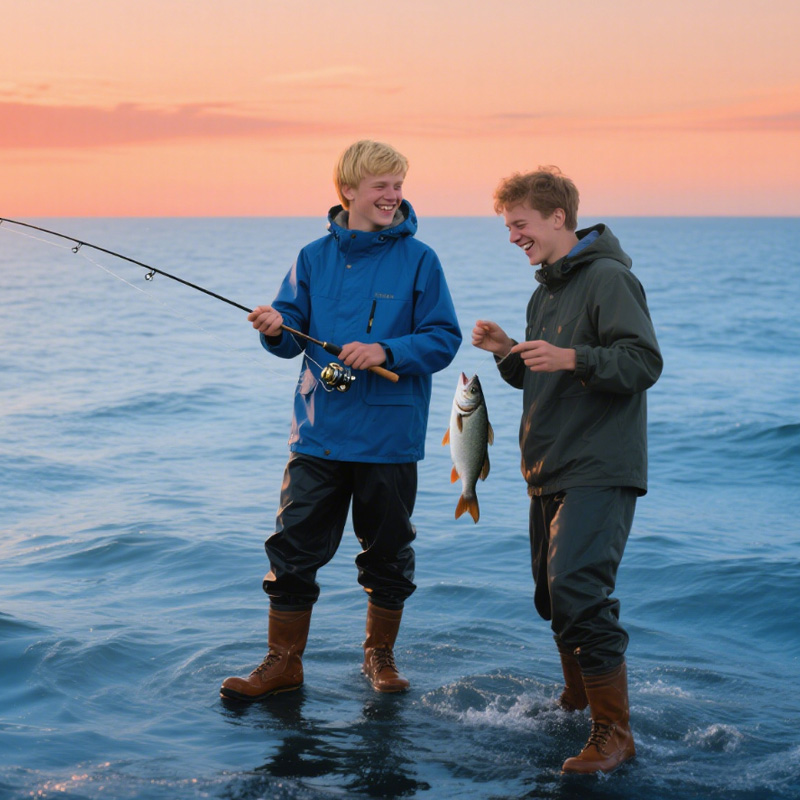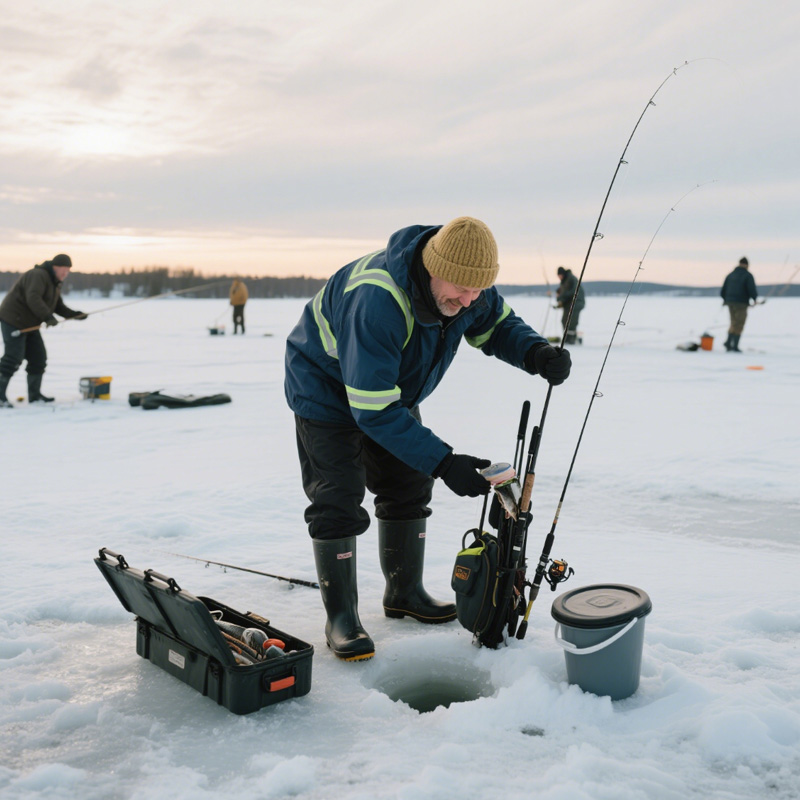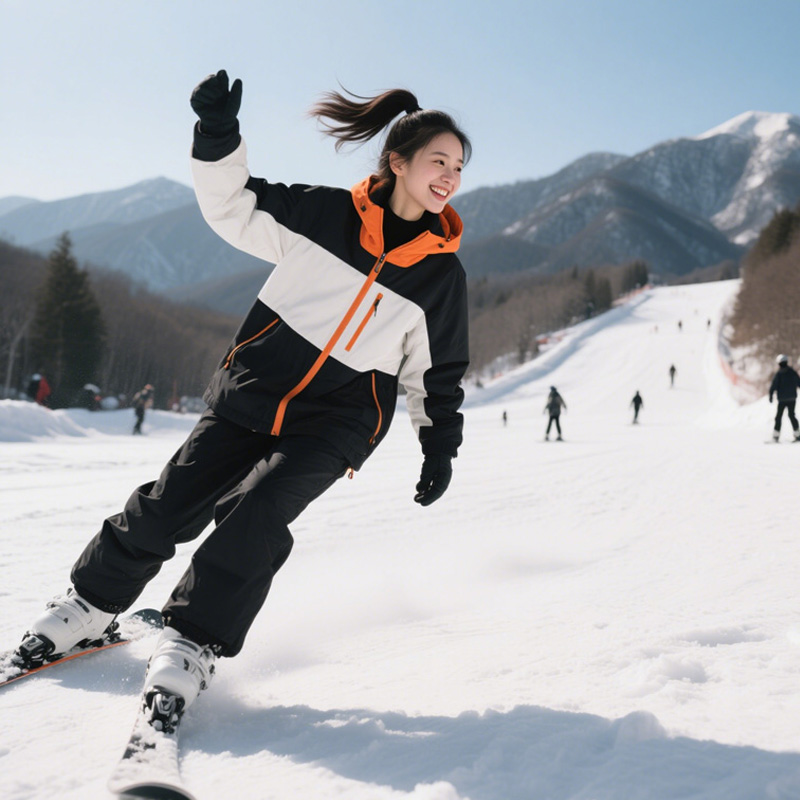Skiing pants can be difficult to choose. While skiers often own many upper body layers and jackets, many only own one pair of snow pants. This need for versatility drives the design attributes of most skiing pants on the market, though there are a few niche options designed for specific types of skiing. Our legs are less susceptible to cold than our upper bodies. We don’t have as many blood vessels near our skin on our lower bodies, so they don’t get the feeling of being cold as easily. This allows our skiing pants to pack less insulation and focus on the more critical tasks, including durability and weather resistance.
BOWINS Garment, a reputable manufacturer and supplier of skiing clothing, recognizes the importance of choosing the right gear to enhance satisfaction and effectiveness during ski activity. This article delves into essential factors to consider when selecting skiing pants empowering you to make an informed decision and relish a successful and comfortable ski experience.
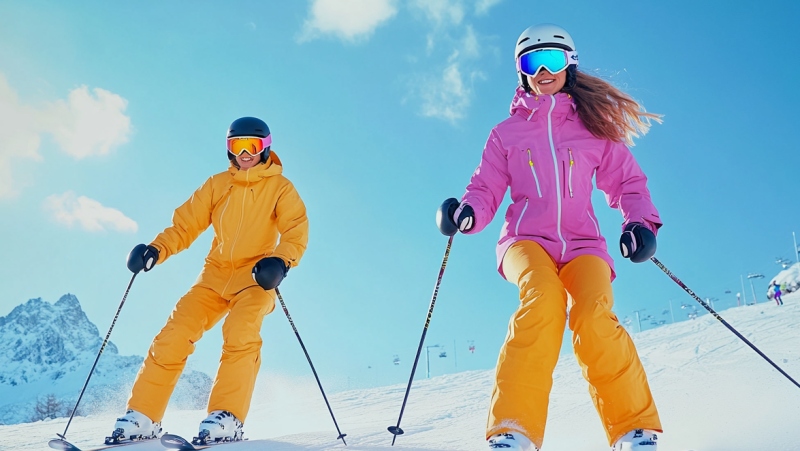
1. What Are Skiing Pants?
Skiing pants, also known as ski pants or snow pants, are essential garments designed specifically for snow sports like skiing and snowboarding. These skiing pants are crafted to provide warmth, protection, and comfort in harsh, cold, and wet conditions typically encountered on the slopes. They are made from high-performance materials such as Gore-Tex, which offer waterproof and windproof properties. BOWINS Garment always use some high quality but reasonable prices waterproof membrane such as PU,PTFE membrane. Additionally, skiing pants feature insulation to keep the wearer warm, with options ranging from synthetic insulation to natural down. The level of insulation you need depends on the typical temperatures you will be in. BOWINS can provide below options for your choice:
Thinsulate: Lightweight and highly effective in trapping heat.PrimaLoft: Offers excellent insulation even when wet.Domestic Padding: With good thermal effect and cheap price.
Down: Provides exceptional warmth but can lose insulating properties when wet.
Consider Skiing pants with adjustable or removable insulation layers to adapt to varying temperatures.
Breathability is another critical aspect of skiing pants, allowing moisture from sweat to escape and ensuring comfort during intense physical activity. Ventilation zippers are commonly included to enhance airflow. Durability is ensured through reinforced patches on areas prone to wear and tear, such as the knees, seat, and ankles. This makes the skiing pants resilient against falls and abrasion from ski edges.
Fit and mobility are optimized through articulated knees and stretchy materials, allowing skiers to move freely. Snow gaiters at the bottom of the skiing pants prevent snow from entering, while adjustable waistbands, belt loops, and sometimes suspenders ensure a secure and comfortable fit. Practicality is also a key feature, with multiple zippered pockets to store essentials like lift passes and snacks.
Skiing pants come in various styles, including bib pants, which extend higher up the torso and include suspenders for extra warmth and snow protection; shell pants, which are lightweight and designed to be worn over base layers; and insulated pants, which provide built-in warmth.
2. Types of Skiing Pants
Skiing pants are typically categorized based on the type of shell fabric they use and their level of insulation. Three-layer hardshell skiing pants offer excellent weather resistance but lack insulation, making them less warm. Two-layer shells provide good weather resistance along with some warmth, thanks to a hanging liner. Insulated skiing pants feature synthetic insulation beneath the outer shell, making them ideal for the coldest winter conditions. Bibs, similar to overalls, provide superior weather resistance but can restrict movement and feel stuffy during intense activity. Backcountry pants usually utilize softshell fabric, which is stretchy and breathable but not very resistant to precipitation. BOWINS design team can design various styles of skiing pants according to your needs. And we have many ODM models for you to choose from. BOWINS’ design and development team is experienced in creating a wide range of ski pants styles, from base layers to complex multi-functional designs. They consider various skiing environments, climates, and activity levels to develop a versatile layering system that meets functional needs.
If You Have Existing Designs:
Product Pictures and Amendments: Provide product pictures with corresponding amendments and requirements. BOWINS will offer design drawings and size tables for confirmation.
Samples and Revision Opinions: Send ski pants samples with revision opinions and requirements. This clear and operable method reduces ambiguity.
Design Drawings and Specifications: Provide design drawings, size tables, and other information. This professional approach helps reduce communication ambiguity.
If You Don’t Have Designs:
BOWINS design and development team will provide professional design services based on your requirements and their extensive experience. They will make adjustments and provide design drawings, specifications, product details, and size tables for your confirmation, including color drafts.

2.1 3-Layer Shell skiing pants
These are among the simplest yet most robust skiing pants available. They are constructed from a laminated sandwich of three different materials, all bonded together. The “three-layer” designation refers to the number of sheets fused into one cohesive fabric. The outermost layer, visible to the world, provides initial protection against abrasion and weather. Attached to the inner side of this outer fabric is a waterproof and breathable membrane, which effectively blocks liquid water even if the outer layer becomes soaked. On the innermost side of the membrane, a light fabric layer is bonded to protect the membrane and offer a bit more comfort against the skin.
The result is a single, durable layer of fabric. Skiing pants made from three-layer shell fabric tend to be stiffer and less flexible than other options due to the thickness of the material. They are easy to put on and offer good ventilation. However, they don’t feel very comfortable against bare skin, making them more suitable for wearing with long underwear. For backcountry travel on stormy days, we prefer three-layer shell pants paired with a thin layer of long underwear for added comfort and protection.
2.2 2-Layer Shell Skiing Pants
In the realm of 2-layer shell skiing pants, there are still at least three layers of material involved, but the layer count refers to the number of textile sheets laminated together. These skiing pants feature a durable face fabric with a waterproof and breathable membrane laminated to its inner side. Unlike 3-layer skiing pants, however, a separate lining fabric hangs independently from these external components. This lining fabric is typically soft and comfortable, making these skiing pants more pleasant to wear directly against the skin. The space between the liner and the outer shell creates an additional air pocket, which, once warmed by the user’s body heat, provides extra insulation.
2.3 Insulated Skiing Pants
As their name suggests, insulated skiing pants come with built-in “puffy” insulation. These pants offer enhanced comfort and warmth in the coldest conditions compared to using a layering system with non-insulated skiing pants. However, the insulation is not removable, making them less versatile for warmer conditions, high-output activities, or those who naturally run warm. If you tend to feel cold and primarily ski in chilly climates, insulated pants are a great option.
Some skiers may prefer to have insulated skiing pants as a secondary option in their wardrobe. On the coldest days, insulated skiing pants can be advantageous, as extensive layering under shell pants can become bulky. For those who ski frequently and can justify owning multiple pairs of pants, having an insulated pair alongside your regular shell skiing pants is worth considering.
2.4 Ski Bibs
Ski bibs offer exceptional full-body weather protection, effectively bridging the gap between skiing pants and jackets that can be vulnerable to weather penetration. If they fit well, bibs can be significantly more comfortable than standard waist-height skiing pants. However, they do come with some drawbacks, such as reduced ventilation and the additional layers on your upper body, which can result in extra warmth around the abdomen and chest. Furthermore, ski bibs are less commonly produced and distributed, meaning there are fewer options available in terms of fit, color, insulation, and style.
2.5 Backcountry Skiing Pants
Before diving into this style, it’s important to note that many people use their regular resort pants for backcountry skiing. While this can work, an increasing number of pants are being specifically designed for backcountry use. Lighter and more tailored resort pants are also often suitable for backcountry skiing.
Backcountry skiing pants are crafted to meet the demands of their specific environment. They are typically lighter in weight, offer ample ventilation, and fit more closely to the body compared to resort pants. Many backcountry skiing pants feature a softshell material for the outer layer, providing increased breathability, less weight, and a greater range of motion. However, these pants are generally less weather-resistant due to the absence of the thick, heavy fabrics commonly found in resort pants. This trade-off allows for better breathability during uphill skinning.
Additionally, backcountry skiing pants often include a dedicated pocket with an internal clip for an avalanche transceiver, catering to the safety needs of backcountry skiers.

3. What Are The Essential Feature Of Skiing Pants?
One of the most critical aspects of high-quality skiing pants is the choice of material, especially the face fabric. The face fabric is pivotal in delivering the desired waterproof and breathable performance. Typically, skiing pants feature a durable water-repellent (DWR) coating on the face fabric, which is just the beginning of their essential features. Let’s delve deeper into these features to understand their importance in ensuring comfort and protection during winter activities.
3.1 Durable Water Repellent (DWR) Coating
The DWR coating on the face fabric of skiing pants is crucial for repelling moisture. This coating creates a hydrophobic surface that causes water to bead up and roll off the fabric rather than being absorbed. This means that when you’re in the snow or exposed to light rain, your skiing pants effectively shed moisture, keeping you dry and comfortable. Without this feature, snow and rain could soak into the fabric, leading to discomfort and potentially even hypothermia in extreme cold.
3.2 Fully Taped Seams
Fully taped seams are another critical feature that sets high-quality skiing pants apart. These seams prevent melted snow or rain from sneaking past the stitching and reaching your skin or underlayers. When you’re actively engaged in winter sports or simply enjoying the snowy outdoors, it’s common to encounter wet conditions. Fully taped seams act as a barrier, sealing off any potential entry points for moisture, thus preventing cold, wet discomfort during your winter adventures.
3.3 Insulation
While not all skiing pants include insulation, it significantly enhances warmth. Insulated skiing pants are lined with materials that trap and retain heat, ensuring your legs stay warm even in frigid temperatures. This added warmth is essential for winter activities that expose you to cold air and snow for extended periods. Whether you’re skiing, snowboarding, or hiking, insulated skiing pants keep you cozy and comfortable.
3.4 Venting Options
Venting options in skiing pants are essential for regulating body temperature. When you’re active in the snow, it’s common to build up heat and moisture inside your clothing. Skiing pants often come with zippered vents that allow you to release excess heat and moisture, preventing overheating and keeping you dry. Proper ventilation is crucial for maintaining comfort during physical winter activities.
3.5 Reinforced Knees and Seat
Skiing pants are designed to withstand the rigors of winter sports. Reinforced knees and seat areas add durability to the pants, ensuring they can endure activities like kneeling in the snow or sliding down slopes. This reinforcement prevents wear and tear, keeping your skiing pants in excellent condition even after repeated use.
3.6 Adjustable Features
Many skiing pants come with adjustable features such as waistbands and cuffs. These adjustments allow you to create a customized fit that ensures maximum comfort and protection from the cold. Adjustable cuffs, for example, enable you to seal your skiing pants around your boots, preventing snow from entering.
4. Considerations When Choosing Skiing Pants
Before delving into the specifics of skiing pants, it’s crucial to have a firm grasp of your unique requirements and preferences, as choosing the right pair of skiing pants is a critical decision that can significantly impact your skiing experience and overall comfort in cold weather. Whether you’re an avid skier seeking the warmest skiing pants, a snowboard enthusiast, or someone who simply enjoys the beauty of snowy landscapes, selecting the perfect skiing pants tailored to your specific needs is essential. There are several key factors to consider when choosing the right skiing pants, whether you prefer wet-weather bibs, resort pants, or something more versatile.
4.1 Versatile Winter Activities
If your winter adventures encompass a variety of activities like snowshoeing, hiking, or simply enjoying the snowy outdoors, versatile lightweight skiing pants are an excellent choice. These pants offer the warmth you need while providing the flexibility and mobility required for different activities. Look for options with moisture-wicking properties to keep you dry during high-energy endeavors.
Downhill Skiing: If downhill skiing is your primary focus, investing in the warmest skiing pants is a wise decision. Look for skiing pants equipped with insulation and fully taped seams. These features ensure seamless protection from the cold and moisture, making them ideal for extended periods on icy slopes. For in-depth recommendations on the best downhill pants, you can refer to comprehensive reviews.
4.2 Waterproofing and Insulation
Understanding the waterproofing and insulation properties of your skiing pants is essential for staying warm and dry in various weather conditions:
Waterproofing: For activities in snowy or wet environments, such as skiing or snowboarding, opt for skiing pants with robust waterproofing capabilities. Look for a highly repellent outer face fabric treated with a durable water-repellent (DWR) coating. This coating causes moisture to bead up and roll off the fabric, ensuring you stay dry even under heavy snowfall or rain.
Insulation: The level of insulation in your skiing pants is also a critical factor, particularly if you will be exposed to cold temperatures. Insulated skiing pants are designed with an added layer of insulation, typically sandwiched between the outer fabric and the inner lining. This insulation traps and retains heat, providing exceptional warmth in chilly conditions. it’s essential to choose the right level of insulation based on your personal cold tolerance and the expected weather during your activities.
4.3 Fit and Comfort
Comfort is paramount when selecting skiing pants, and this begins with finding the right fit:
Size: Ensure that you choose the correct size for your skiing pants. Skiing pants that are too tight can restrict your mobility and hinder movement on the slopes, while overly loose pants may not effectively retain heat. To determine the ideal size, consider the layers you plan to wear underneath, such as thermal base layers or leggings. Trying on skiing pants with your base layers already on is a practical approach to finding the right fit.
4.4 Ventilation and Breathability
Ventilation and breathability are essential features for maintaining a comfortable body temperature during physical winter activities:
Ventilation: Look for skiing pants equipped with ventilation options, such as zippered vents. These vents allow you to release excess heat and moisture, preventing overheating and keeping you dry. Proper ventilation is crucial for staying comfortable during active pursuits in the snow, preventing the accumulation of sweat and moisture.
4.5 Durability and Reinforcements
Consider the durability of your skiing pants, especially if you plan to engage in physically demanding winter sports:
Reinforcements: Skiing pants with reinforced knees and seat areas provide added durability, preventing wear and tear. These reinforcements are particularly valuable if your activities involve kneeling in the snow or sliding down slopes on a sled.
4.6 Price and Budget
Finally, factor in your budget when shopping for skiing pants:
Budget Considerations: While high-quality skiing pants from reputable brands often come with premium materials and advanced features, it’s essential to find a pair that aligns with your financial resources. Keep in mind that price doesn’t always equate to the best. There are plenty of mid-range skiing pants that offer exceptional performance and value, catering to a wide range of budgets.
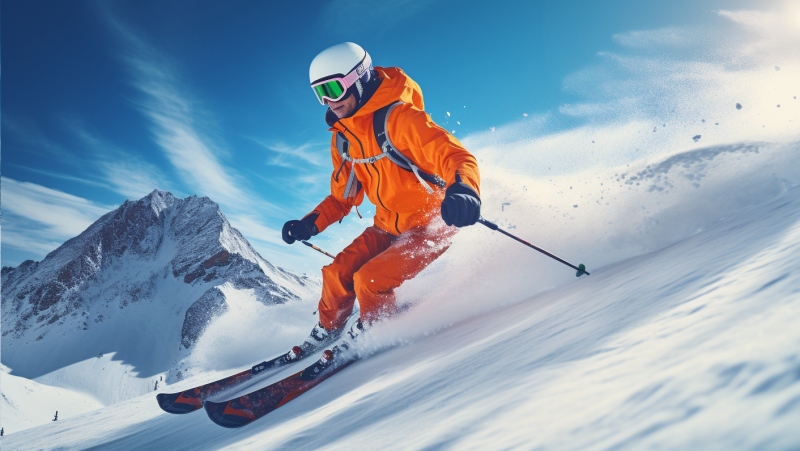
5. Conclusion
Choosing the right skiing pants is essential for comfort and performance on the slopes. Given their versatility, skiing pants must balance insulation, weather resistance, and mobility. Options range from 3-layer and 2-layer shell pants to insulated and backcountry-specific designs, each catering to different needs and conditions. Key features to look for include durable water-repellent (DWR) coating, fully taped seams, appropriate insulation, and ventilation options. Reinforced areas and adjustable features ensure durability and a customized fit.
When selecting skiing pants, consider the nature of your winter activities, the level of waterproofing and insulation required, and ensure a proper fit for optimal comfort. Ventilation and breathability are crucial for regulating body temperature during intense activities. Balancing these factors with your budget will help you find the best value. By carefully assessing these aspects, you can make an informed decision and enhance your skiing experience.
Over the past decade, BOWINS Garment has emerged as a highly popular manufacturer in the functional clothing industry. It represents a significant technological advancement in ski clothing, particularly in the domain of the BOWINS brand. The evolution of ski components has been a key focus for BOWINS, resulting in their classic ski styles gaining considerable traction in the European and American outdoor markets. These styles have also earned recognition from renowned ski clothing brands worldwide. If you are interested in our products, we encourage you to get in touch with us. The BOWINS design team is prepared to customize ski products to your specific requirements, ensuring that we provide you with top-quality service. Your satisfaction is our utmost priority, and we are dedicated to delivering exceptional solutions that meet your individual needs.
Thanks for your reading!

